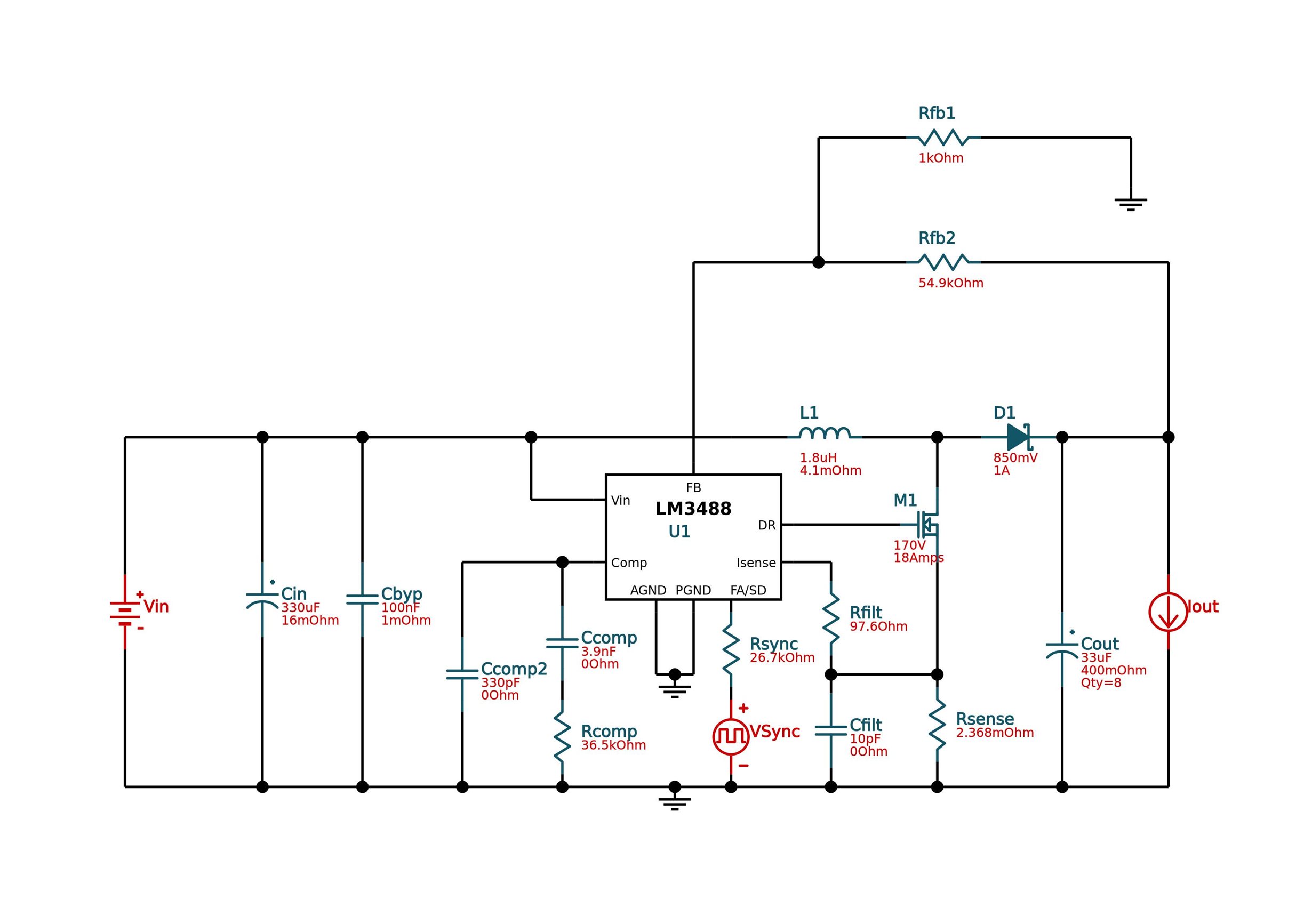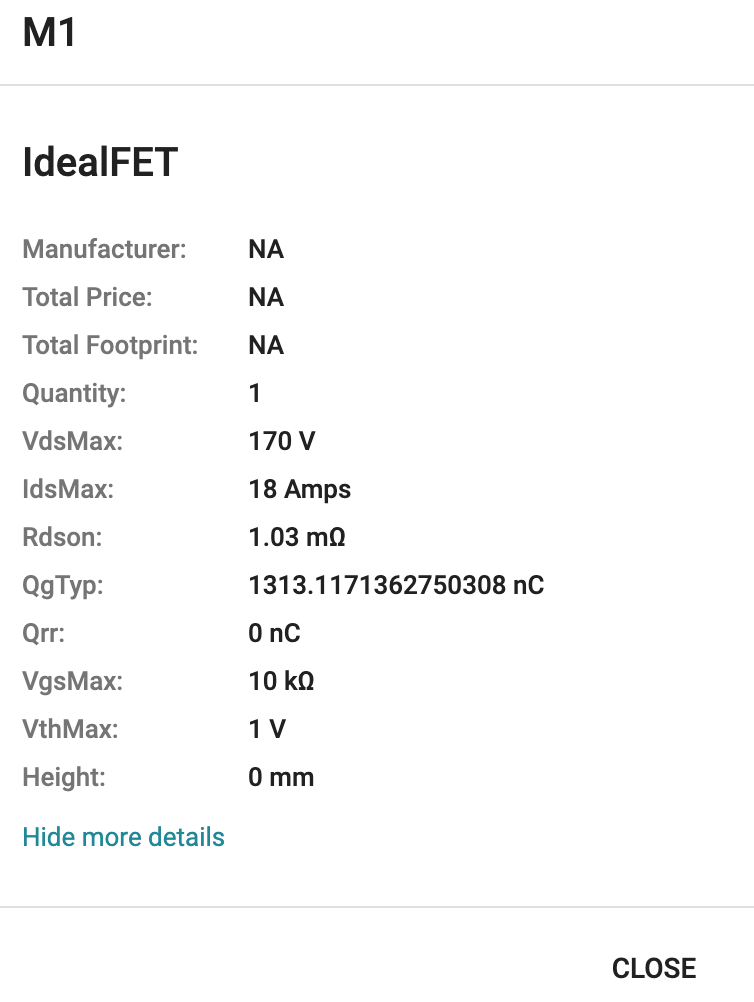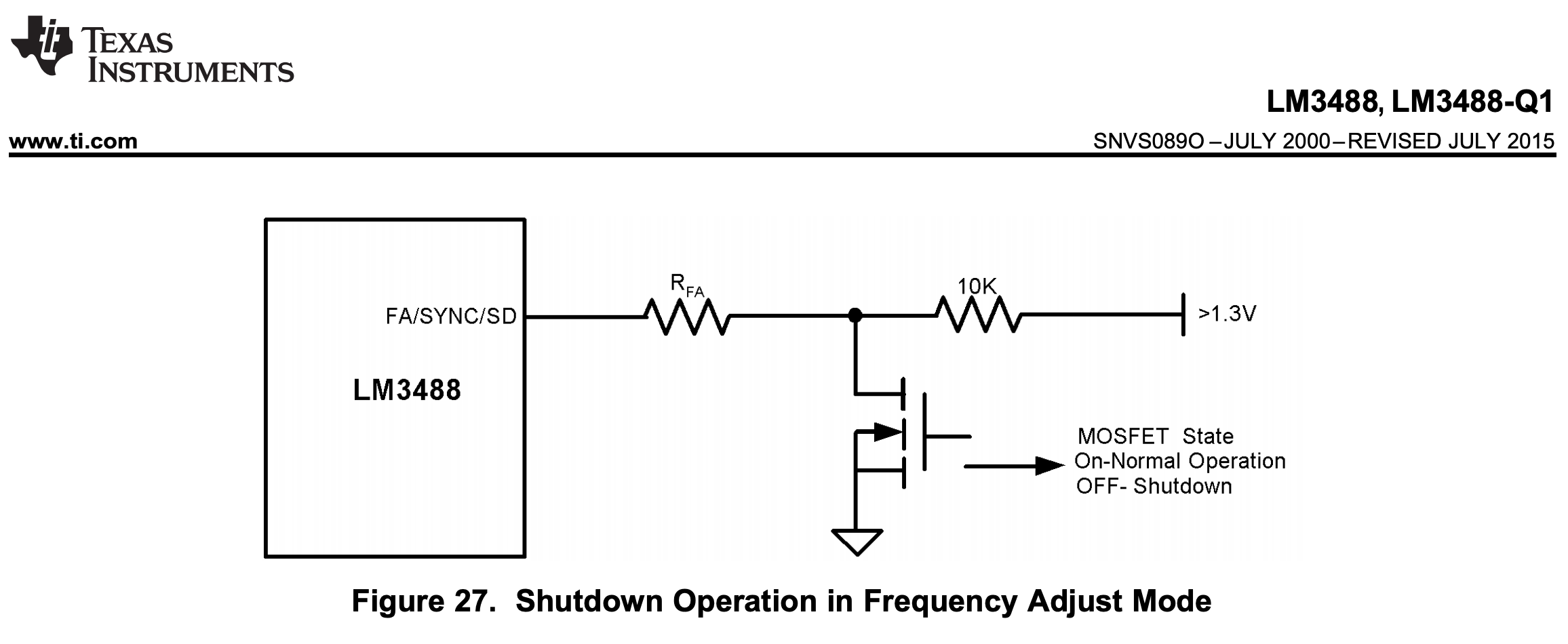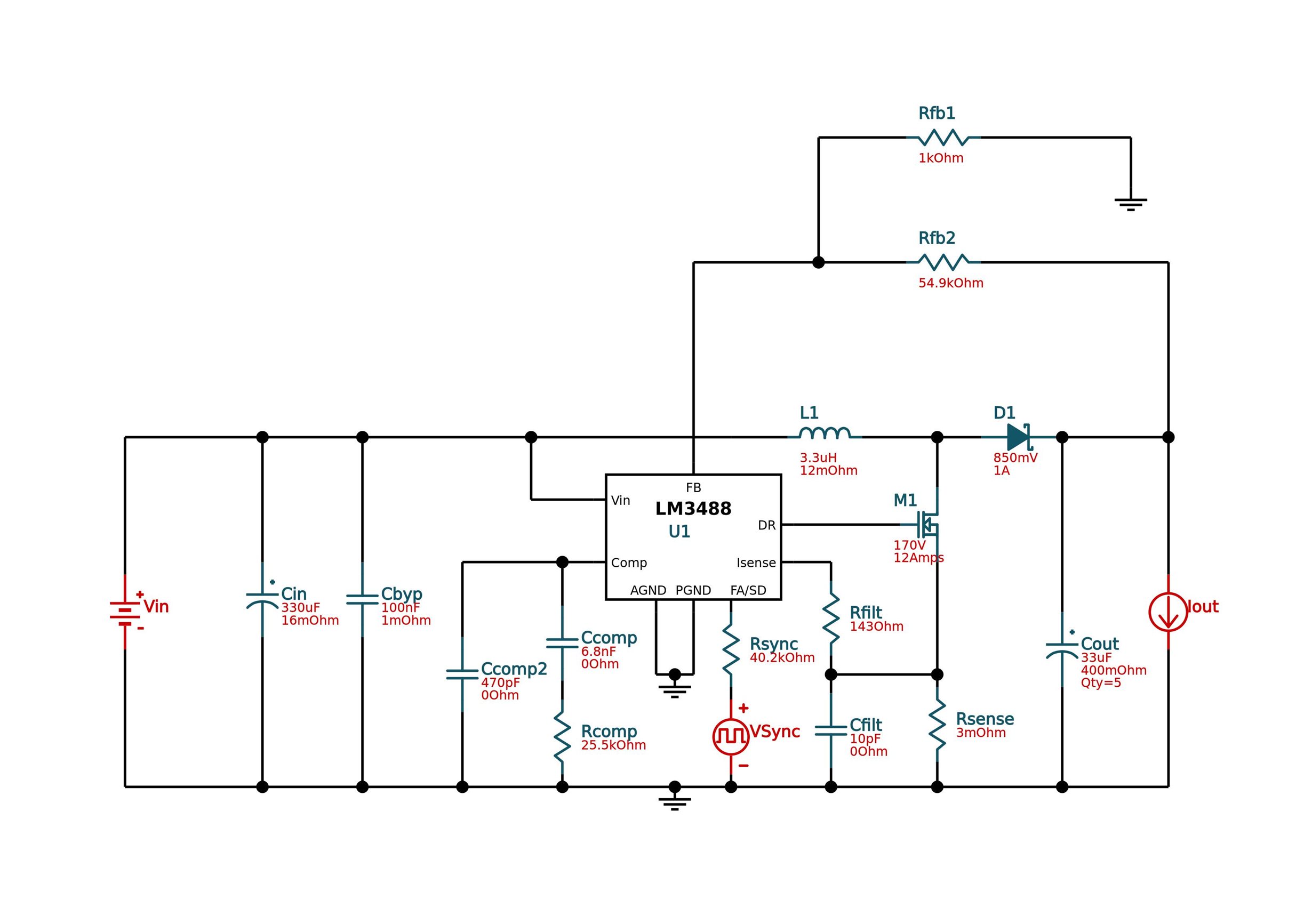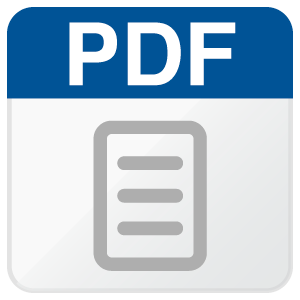Other Parts Discussed in Thread: CSD19533Q5A, CSD17579Q5A,
Hi, guys. I'm trying to make two custom PCBs with the LM3488MMX/NOPB. Each PCBs will have the MSP432P401R MCU (3.3V).
1) 5V micro-USB powered boost converter to generate 70.40V @ 0.48A
2) Single cell Li-ion 3.7V (550mAh) battery-powered boost converter to generate 70.40V @ 0.48A
With the MPS432, I'm trying to turn on/off the 70V supply which will be connected to a high-voltage Op Amp.
Thanks to the WEBENCH, I got this schematic.
May I ask these questions;
Q0. By using 5V micro-USB or 3.7V 550mAh Li-ion as the input, will this generate the 70.40V output?
From the WEBENCH, it says Vout Actual = 70.43V (I'm fine with the 70.43V), Vout Tolerance = 3.22%
Or will it depend on how I choose M1 NMOS?
Q1. Considering the "M1 IdealFET" specification, is there an NMOS to choose from TI?
Like the CSD19533Q5A (Max Drain-to-Source Voltage = 100V, Threshold Voltage = 2.8V, Max Continuous Drain Current (Silicon limited) = 75A)?
Q2. This figure demonstrated how to turn on/off the boost converter using the NMOS as a switch
Is it okay to connect MSP432's 3.3V GPIO to the GATE so that I can turn this on/off? I hope CSD17579Q5A (Max Drain-to-Source Voltage = 30V, Threshold Voltage = 1.5V, Max Continuous Drain Current (Silicon limited) = 46A)can do the job for this.
Also, what value should be the R_FA? I do not have a preferred switching frequency of the boost converter.


